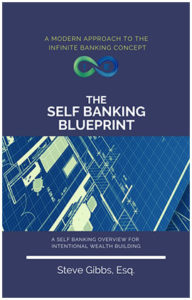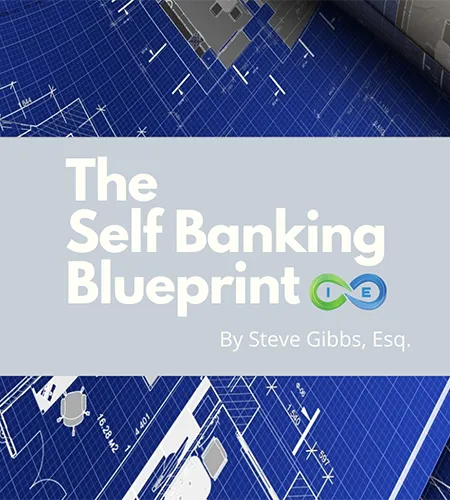One of the keys to obtaining financial leverage to pursuing other investments is to create financial arbitrage with your money. If you can borrow a policy loan at say 5% and your dividend rate is 6.5%, you would have a 1.5% arbitrage on your money and this would allow your policy to keep making money (1.5%) regardless of your policy loans.
For this reason, Nelson Nash recommended that folks use a life insurance company that is NON-DIRECT RECOGNITION vs. DIRECT RECOGNITION to make sure your policy performance is not affected by taking policy loans.
Unfortunately, the direct vs non-direct recognition conversation is not simple and thus is the subject of much hand wringing in the infinite banking community.
Today’s task is to provide a better answer than has been currently offered to one of the key questions posed by those seeking the best infinite banking solution.
Common Misconception: Many believe non-direct recognition is always superior for infinite banking strategies. However, the reality is more nuanced and depends on interest rate environments, company practices, and individual borrowing strategies. This article explores the full picture to help you make an informed decision.
Table of Contents
- Core Definitions: Direct vs. Non-Direct Recognition
- Crediting Adjustments on Life Insurance Policy Loans
- Pros and Cons Comparison
- Impact of Interest Rate Environments
- The Impact of Company Costs and Practices
- Margin Loan Rates vs. Dividend Rates
- Common Myths and Facts
- Top Companies for Direct and Non-Direct Recognition
- Strategic Considerations for Infinite Banking
- Synthetic Non-Direct Recognition Strategies
- Real-World Case Studies
- Conclusion: Making the Right Choice
- Frequently Asked Questions
Core Definitions: Direct vs. Non-Direct Recognition
As discussed above, whole life insurance, as well as other types of permanent life insurance with cash value, allows access to the cash value in your policy through policy loans. Policy loans charge a loan rate that may be fixed or adjustable each year depending upon the policy. When a policy loan is taken in a participating whole life insurance policy, the loan amount continues to earn policy dividends.
Understanding the difference between direct and non-direct recognition is essential before making any decisions about your infinite banking strategy:
Direct Recognition: The insurance company directly recognizes policy loans by adjusting the dividend rate on the portion of cash value used as collateral for a loan. This adjustment may result in a higher or lower dividend rate compared to the standard rate, depending on current loan and dividend rates.
Non-Direct Recognition: The insurance company credits the same dividend rate to all policyholders, regardless of whether they have outstanding loans. The impact of policy loans is spread across all policyholders rather than only affecting those with loans.
Think of it this way: direct recognition is like having your loan activity directly affect your account’s returns, while non-direct recognition treats all policyholders the same regardless of loan activity.
Crediting Adjustments on Life Insurance Policy Loans
Economics requires that policy loans, along with other factors in the economic environment, can have a negative impact on the dividend rates offered by a life insurance company.
This impact, when applied to an insurance policy is called a “crediting adjustment” and there are two ways this adjustment is applied.
These two ways are either Direct Recognition, which passes the adjustment only to the policy holders who have outstanding loans and Non-Direct Recognition, which passes the adjustment to ALL of the policy holders, regardless of outstanding loans.
This crediting adjustment for direct recognition companies can result in a decrease in the dividend rate for those who hold policy loans.
Non-direct recognition insurance companies will not show an adjustment to the dividend rates; however, the dividend rates in total may be lower and it is important to consider this factor.
Direct recognition companies like Penn Mutual contend that their approach is more fair, whereas non-direct recognition companies like Lafayette Life contend that their approach is more suitable for an infinite banking strategy.
However, as we shall see, it isn’t quite this cut and dry.
Pros and Cons Comparison
Key Comparison Factors: When evaluating which approach is better for your situation, consider these critical factors: dividend impacts on loaned vs. unloaned amounts, loan rate structures, transparency of impacts, and how each method performs in different interest rate environments.
| Feature/Impact | Direct Recognition | Non-Direct Recognition |
|---|---|---|
| Dividend on Loaned Cash Value | Adjusted (can be higher or lower) | Unaffected, same as unloaned cash value |
| Dividend on Unloaned Cash Value | May be higher than non-direct recognition | Typically lower overall |
| Loan Rate | Often fixed | Often variable |
| Transparency | Clear impact on dividends when loans are taken | Sometimes less transparent |
| Best Use Case | High-interest rate environments, control preference | Frequent borrowing (infinite banking) |
| Potential Drawback | Lower dividends on borrowed amounts | Lower overall dividend rates |
Margin Loan Rates vs. Dividend Rates
Another important factor to consider is the margin loan rates vs. dividend rates. A margin loan rate can be defined as the difference in the crediting rate between loaned and non-loaned policy values.
For example, the non-loaned dividend interest credit rate may be 6.5% and the loaned rate may be 4.35% resulting in a net loss. Penn Mutual, as an example, responds to this issue by locking in the margin rate to -.65 % in years 1-10 of the policy AND year 11+ at 0% thus allowing for a break even crediting rate on loaned amounts.
The above math is of course based upon the guaranteed vs. non-guaranteed dividend crediting rates and therefore the return on a direct recognition company could in fact be much more favorable than break even.
Key Point: The idea that non-direct recognition always offers positive arbitrage is a myth. Some direct recognition companies actually offer favorable locked-in margin rates that can result in better performance under certain conditions, especially when loan rates exceed dividend rates.
The Impact of Lower vs. Higher Long Term Interest Rates
With all of the above in mind, something that people often forget is the impact of the interest rate environment on your infinite banking strategy and choice of company for infinite banking.
Non-direct recognition companies tend to be more favorable, and illustrate better, in a lower interest rate environment with a higher margin between the loan rates AND dividend crediting rates. The idea behind this fact is that interest rates will tend to rise much more quickly than dividend crediting rates.
Direct recognition companies, which allow the margin rate to be locked, tend to be favorable and illustrate better in a higher interest rate environment due to the fact that rising loan rates could exceed dividend crediting rates fairly quickly.
This is a crucial consideration that many whole life policy illustrations and simplified comparisons fail to account for. The performance of each type of policy can vary dramatically based on the broader economic environment.
Interest Rate Impact Summary:
- Low-Interest Rate Environment: Non-direct recognition may illustrate better due to a larger margin between loan and dividend rates
- High-Interest Rate Environment: Direct recognition can become more favorable, as dividend adjustments may result in better returns for policyholders with loans
- Rising Rate Environment: Direct recognition with locked margin rates provides more predictability and potentially better performance
- Falling Rate Environment: Non-direct recognition may offer temporary advantages but could be offset by company adjustments
THE ULTIMATE FREE DOWNLOAD
The Self Banking Blueprint
A Modern Approach To The Infinite Banking Concept

The Impact of Costs
Perhaps the most elusive factor when analyzing the policy performance, when considering direct vs. non-direct recognition, is the cost factor.
For example, a company may post a higher dividend rate and yet the illustrated guaranteed cash value accumulation may appear less favorable than another company. Although this is hard to put a finger on, the natural answer is that the company has the internal discretion to allocate its costs. For this reason, insurance companies with huge advertising budgets may carry higher internal costs than those with a more conservative approach.
This cost factor is rarely discussed in comparisons between direct and non-direct recognition policies but can have a significant impact on actual policy performance over time.
Beyond Direct vs. Non-Direct: Some companies with higher dividend rates may have higher internal costs, impacting actual cash value growth. Policy illustrations may not always reflect real-world performance due to these internal factors. When choosing between companies, look beyond the direct/non-direct distinction to understand their overall efficiency and cost structure.
For all of the above reasons, the decision whether to go with a direct vs. non-direct recognition company for your infinite banking strategy is not an easy one.
There are factors to consider such as our current interest rate environment, company costs, as well as the overall life insurance company rating of the company you’re considering.
Common Myths and Facts About Direct vs. Non-Direct Recognition
There are several persistent myths in the infinite banking community regarding direct and non-direct recognition policies. Let’s address some of these misconceptions:
Myth #1: Non-direct recognition always creates a “free lunch” arbitrage opportunity.
Fact: This is simply not true. Insurance companies are not in the business of creating guaranteed arbitrage opportunities. Loan rates can be increased to offset potential arbitrage, and dividend rates can fluctuate based on multiple factors beyond the direct/non-direct distinction.
Myth #2: Direct recognition always results in lower returns on borrowed money.
Fact: Direct recognition can sometimes result in higher dividends on loaned portions, especially when the loan rate is higher than the dividend rate. Some direct recognition companies offer favorable fixed spreads that can outperform non-direct recognition policies in certain interest rate environments.
Myth #3: The direct/non-direct distinction is the most important factor in policy performance.
Fact: Over long periods, the difference in policy performance between the two types is often minimal, especially when accounting for changing rates and company costs. Other factors like overall dividend rates, company efficiency, and policy design may have a more significant impact on performance.
Top Companies for Direct and Non-Direct Recognition
When considering which companies to work with for your infinite banking strategy, it’s helpful to know which approach each company takes:
Direct Recognition Companies:
- Guardian Life – Known for strong dividend history and financial stability
- Penn Mutual – Offers favorable locked margin rates on policy loans
- Northwestern Mutual – Consistently high dividend performance
- Ohio National – Strong financial ratings and competitive policy features
Non-Direct Recognition Companies:
- MassMutual – Leading non-direct recognition company with strong dividend history
- New York Life – One of the oldest and financially strongest insurers
- Lafayette Life – Focused on whole life products for infinite banking
- Ameritas – Competitive dividend history with non-direct approach
Selection Tip: Don’t choose a company solely based on their direct or non-direct recognition status. Consider their overall financial strength, dividend history, policy features, and how well their products align with your specific infinite banking goals and borrowing strategy.
Synthetic Non-Direct Recognition Strategies
An advanced strategy that some practitioners use is what’s called “synthetic non-direct recognition.” This approach allows policyholders to potentially benefit from direct recognition companies’ strengths while avoiding some of the potential drawbacks of policy loans:
In this strategy, instead of taking a policy loan directly from your insurance policy, you:
- Use your policy’s cash value as collateral for an outside loan (such as a cash value line of credit)
- This allows your cash value to continue earning the full dividend rate without a direct recognition adjustment
- In some cases, the outside loan may offer lower interest rates than the policy loan
This approach can be particularly effective when using a direct recognition company in a higher interest rate environment, as it allows you to maintain the potentially higher dividend rates on unloaned cash values while still accessing liquidity.
Advanced Strategy Note: While synthetic non-direct recognition strategies can be effective, they introduce additional complexity and potential risks. These include variable interest rates on outside loans, potential changes in lending criteria, and the need to manage an additional financial relationship. Consult with a knowledgeable advisor before implementing this strategy.
Real-World Case Studies
Case Study 1: Long-Term Performance in Different Interest Rate Environments
Let’s examine how direct and non-direct recognition policies might perform under different interest rate scenarios:
Low Interest Rate Environment (2010-2020):
- Non-Direct Recognition Policy: Initial dividend rate 6.1%, loan rate 5%, creating a 1.1% positive arbitrage on loaned amounts
- Direct Recognition Policy: Initial dividend rate 6.3% on unloaned portions, 5.5% on loaned portions, loan rate 5%
- Result: The non-direct recognition policy initially showed better performance when loans were taken, with the arbitrage advantage creating stronger early cash value growth.
Rising Interest Rate Environment (Hypothetical Future):
- Non-Direct Recognition Policy: Dividend rate rises to 6.5%, but loan rate increases to 7%, creating a 0.5% negative arbitrage
- Direct Recognition Policy: Dividend rate rises to 6.8% on unloaned portions, remains at 6% on loaned portions due to locked margin rate, loan rate 7%
- Result: The direct recognition policy would show stronger performance, particularly for policyholders who maintain significant unloaned cash value.
This case study demonstrates how the relative advantage can shift based on the interest rate environment, illustrating why a simplistic “one is always better” approach fails to capture the complexity of the decision.
Case Study 2: Frequent Borrowing vs. Occasional Borrowing
The policyholder’s borrowing strategy also impacts which approach is more advantageous:
Scenario A: Frequent Borrower (Maximum Banking Utilization)
- Policyholder consistently borrows 60-80% of available cash value for various investments and opportunities
- Non-Direct Recognition: Maintains consistent dividend crediting regardless of loan activity
- Direct Recognition: May see reduced overall performance due to lower crediting on the majority of cash value
- Result: The non-direct recognition policy may be more suitable for very active infinite banking practitioners.
Scenario B: Occasional Borrower (Primarily Cash Accumulation)
- Policyholder borrows 20-30% of cash value occasionally for specific opportunities
- Non-Direct Recognition: May have slightly lower dividend rates overall
- Direct Recognition: Benefits from potentially higher rates on the majority of cash value (unloaned portion)
- Result: The direct recognition policy may provide better overall performance.
Frequently Asked Questions
Does direct recognition always mean I’ll earn less when taking policy loans?
No, this is a common misconception. Direct recognition simply means the dividend rate is adjusted on the loaned portion of your cash value. Some direct recognition companies offer favorable margin rates that can result in competitive or even superior performance, especially in higher interest rate environments.
Did Nelson Nash (creator of the Infinite Banking Concept) recommend only non-direct recognition companies?
While Nelson Nash did express a preference for non-direct recognition companies in his book “Becoming Your Own Banker,” he also emphasized working with mutual companies with strong dividend histories. The insurance market has evolved since his initial writings, and today some direct recognition companies offer competitive features for infinite banking strategies.
How can I determine which approach is better for my situation?
Consider your borrowing strategy (frequency and amount), your time horizon, your view on future interest rates, and the specific companies you’re considering. Request illustrations from both types of companies based on your specific situation, and work with an advisor who understands the nuances of both approaches rather than one who dogmatically favors either.
Can the dividend rate on my policy change over time?
Yes, dividend rates for both direct and non-direct recognition companies are not guaranteed and can change annually based on company performance, investment returns, and broader economic conditions. This is why historical dividend performance and company financial strength are important considerations beyond just the direct/non-direct distinction.
What happens if interest rates rise significantly in the future?
In a rising interest rate environment, direct recognition companies with locked margin rates may perform better than expected, as they can limit the negative impact of higher loan rates on dividend crediting. Non-direct recognition companies might adjust their overall dividend rates or loan rates to compensate, potentially reducing the perceived arbitrage advantage.
Conclusion: Making the Right Choice
The direct vs. non-direct recognition debate continues to be one of the most discussed topics in the infinite banking community. As we’ve explored throughout this article, the reality is far more nuanced than simply declaring one approach superior to the other.
The best choice for your infinite banking strategy depends on multiple factors, including:
- Your borrowing strategy and frequency
- The current and anticipated future interest rate environment
- The specific company offerings and their internal cost structures
- Your time horizon and financial objectives
Final Recommendation: Rather than fixating solely on the direct vs. non-direct recognition distinction, focus on finding a financially strong mutual insurance company with a consistent dividend rate history and policy features that align with your specific infinite banking goals. The overall design and implementation of your banking strategy will likely have a far greater impact on your success than this single policy feature.
At Insurance and Estates, we help clients navigate these complex decisions to create optimal infinite banking strategies tailored to their unique situations. We believe in education first, so you can make informed decisions about which approach and which companies will best serve your financial goals.
Unlock the Best Infinite Banking Strategy for You
Not sure whether direct or non-direct recognition is right for your infinite banking goals? Let our expert advisors provide a tailored analysis to help you choose the optimal life insurance company and strategy for your unique financial situation.
- ✓ Get a customized comparison of direct and non-direct recognition policies based on your borrowing habits
- ✓ Understand how interest rate trends could impact your policy’s performance
- ✓ Discover advanced strategies like synthetic non-direct recognition to maximize returns
- ✓ Receive clear insights into company costs, dividend histories, and financial strength
Schedule your free 30-minute infinite banking consultation today and start building a strategy that aligns with your financial vision.
No pressure, no commitment—just expert advice to help you navigate the complexities of infinite banking and make an informed decision.
THE ULTIMATE FREE DOWNLOAD
The Self Banking Blueprint
A Modern Approach To The Infinite Banking Concept





